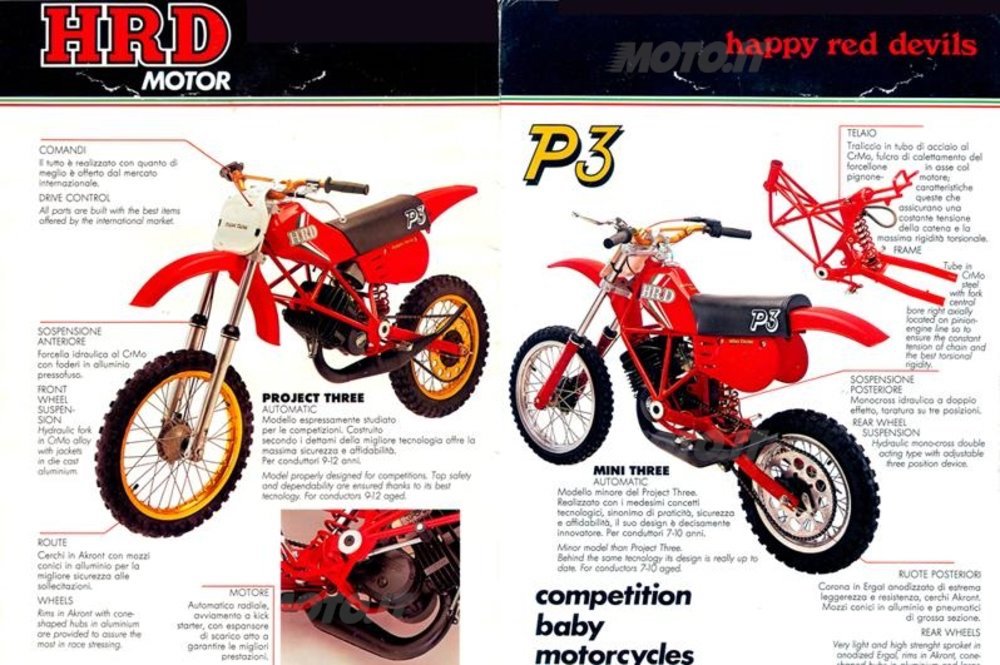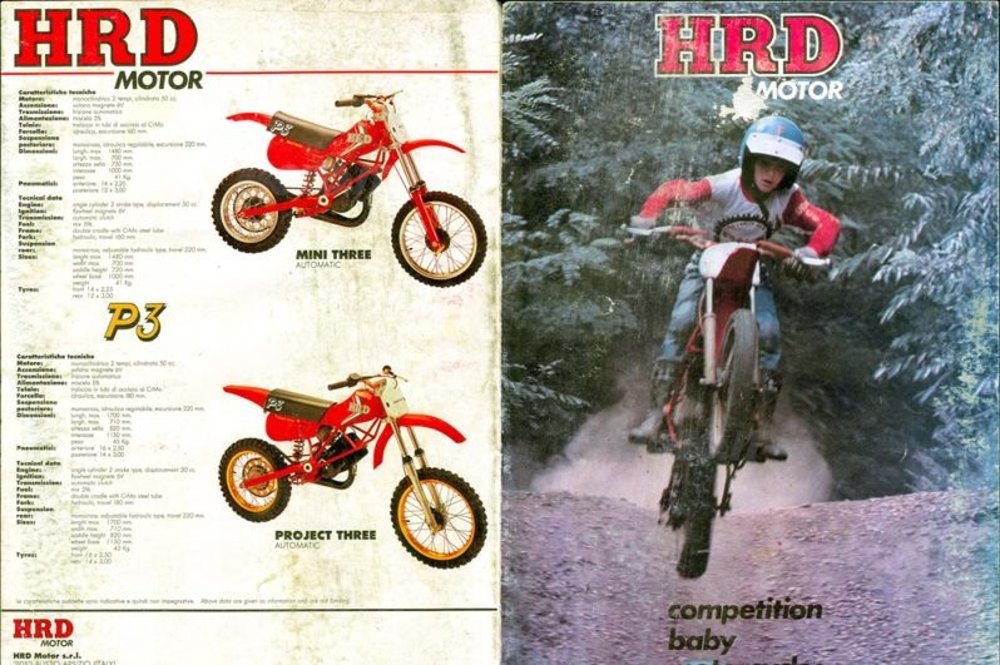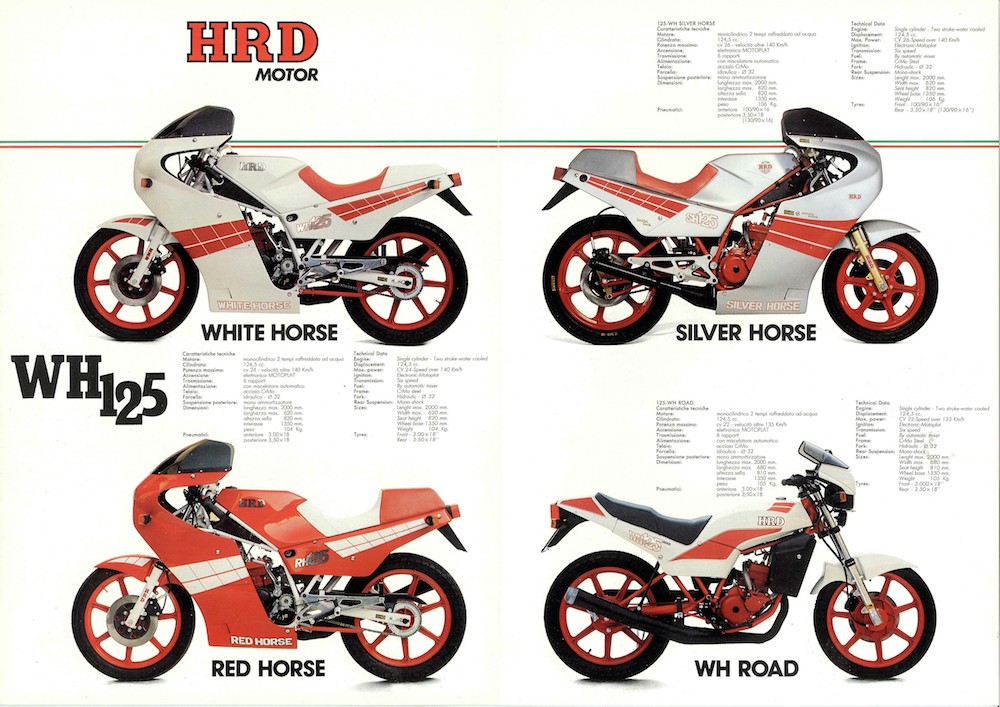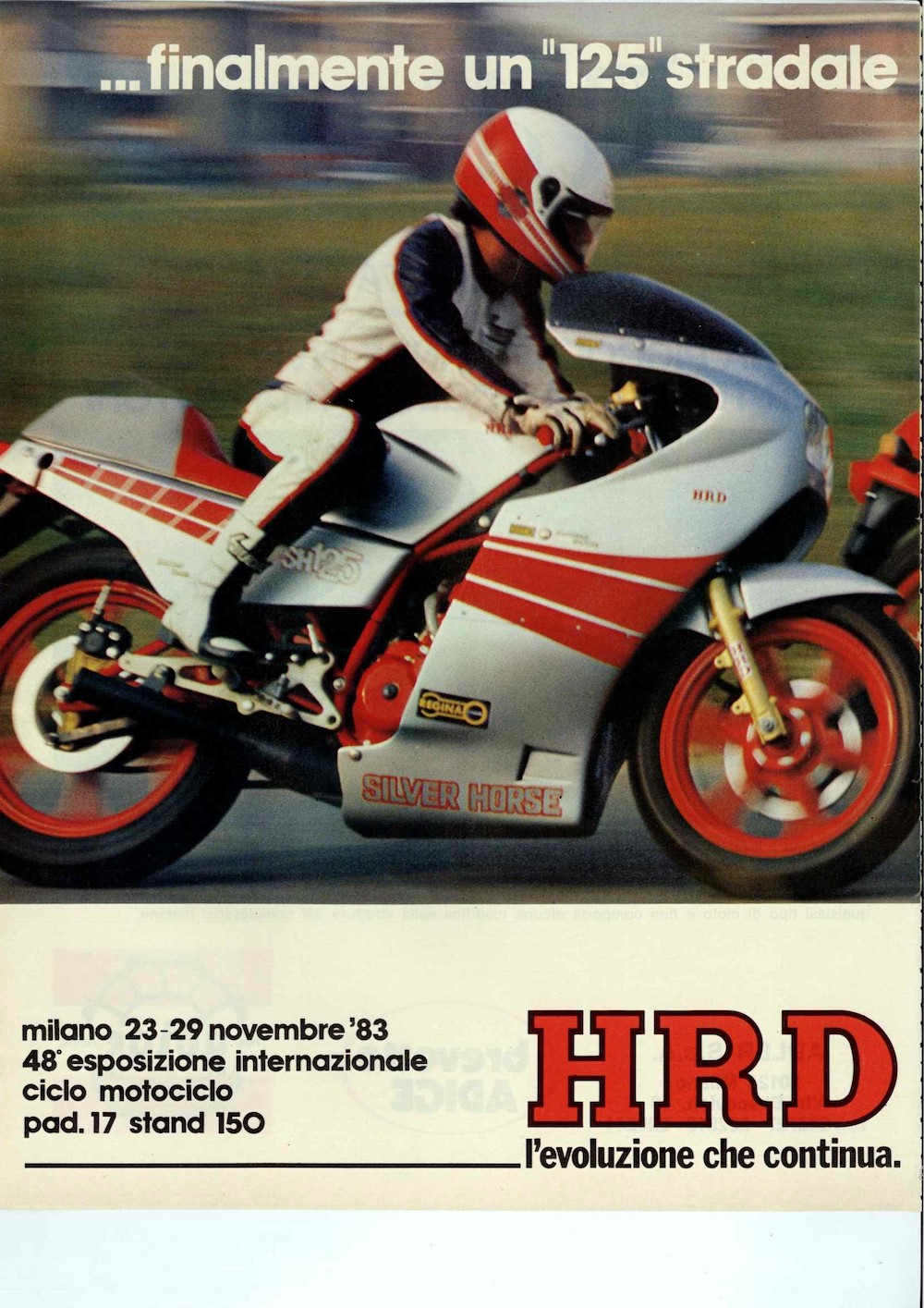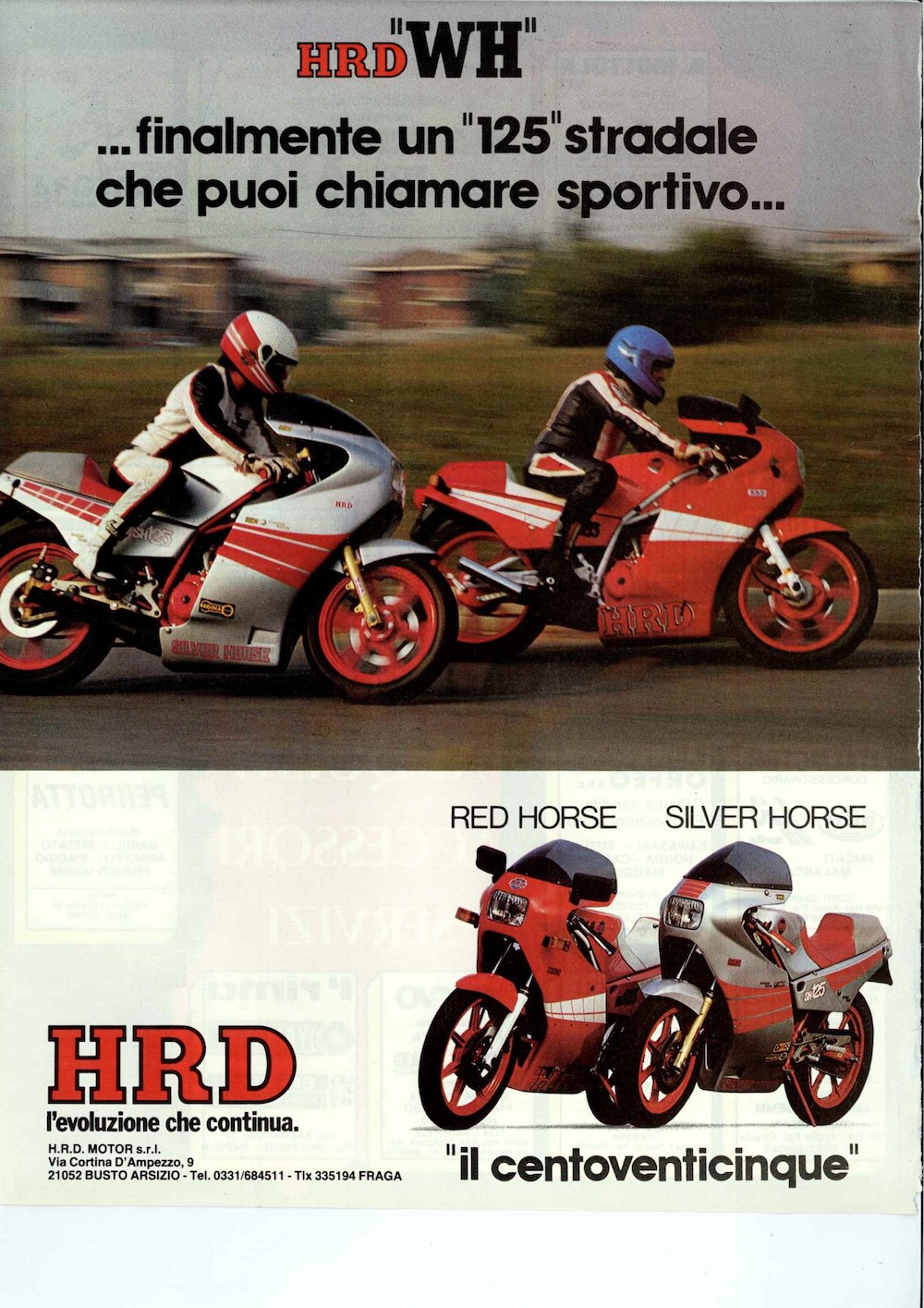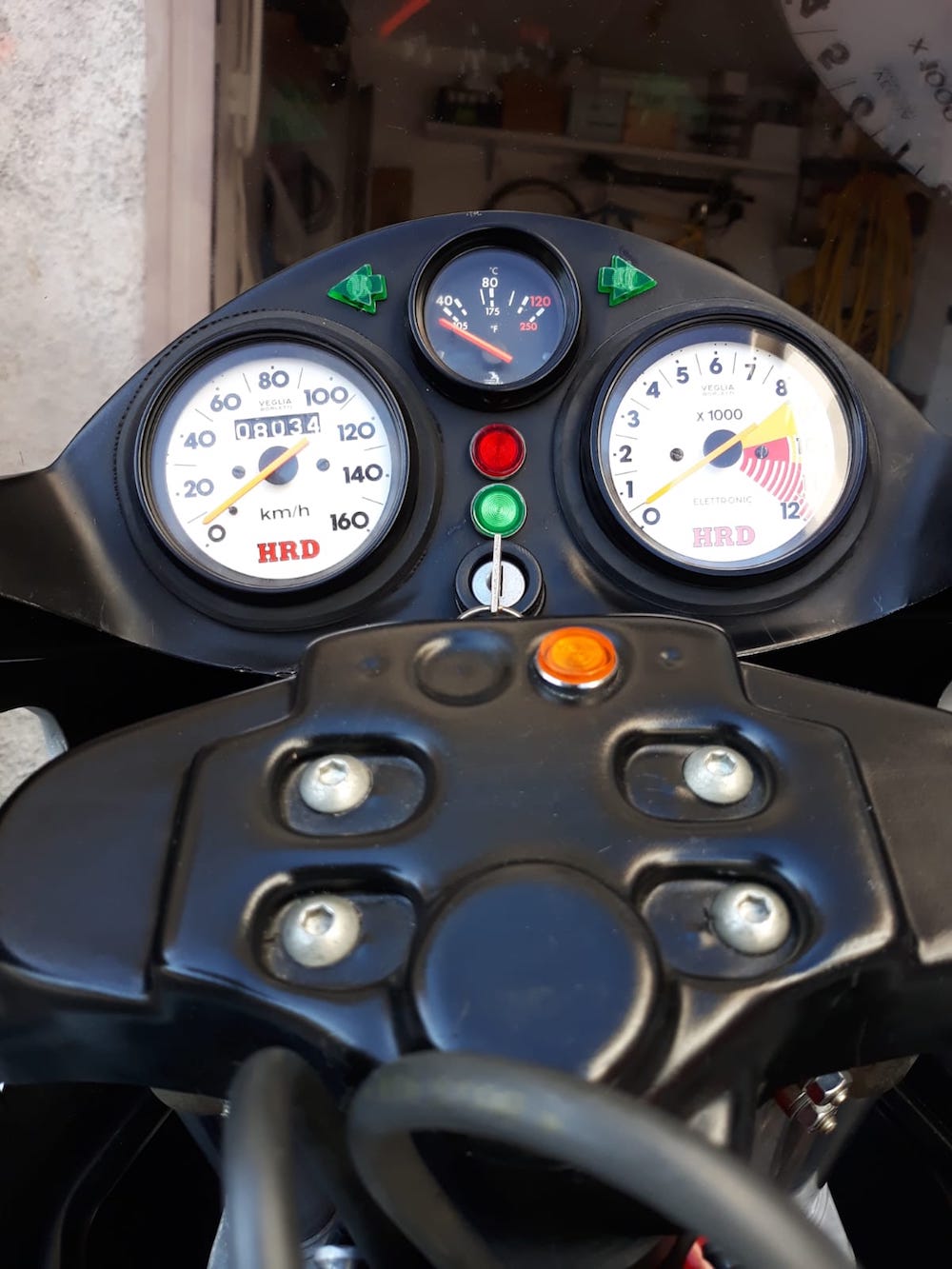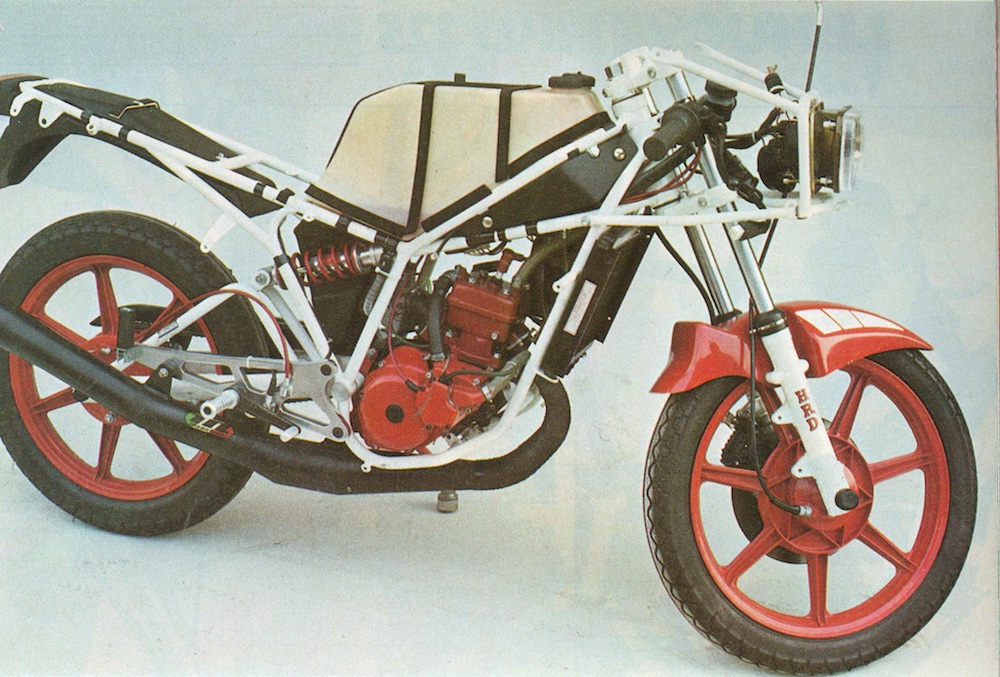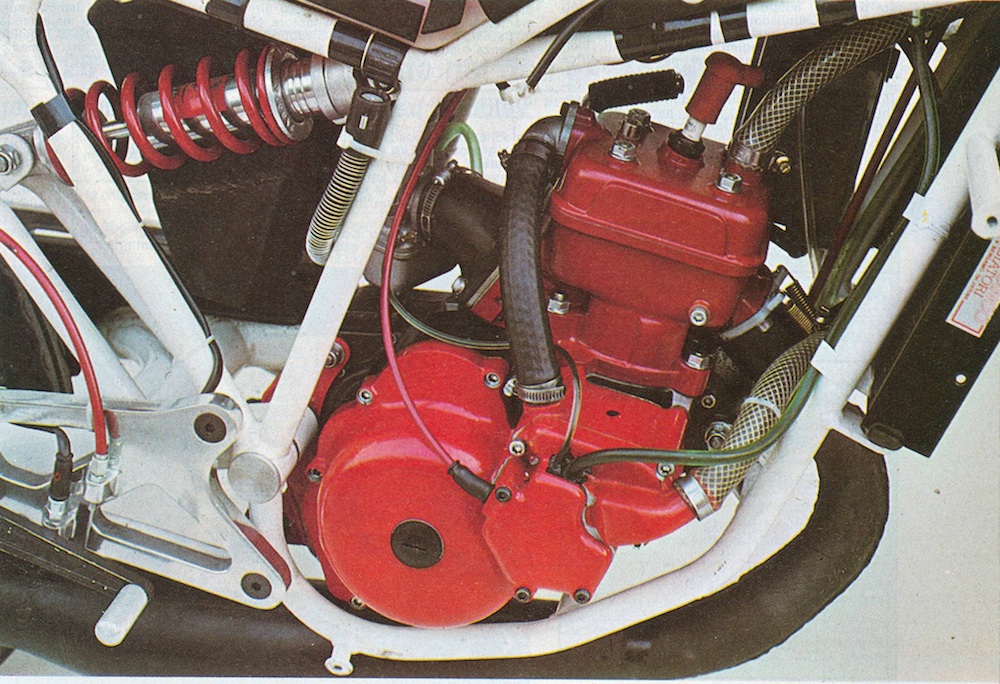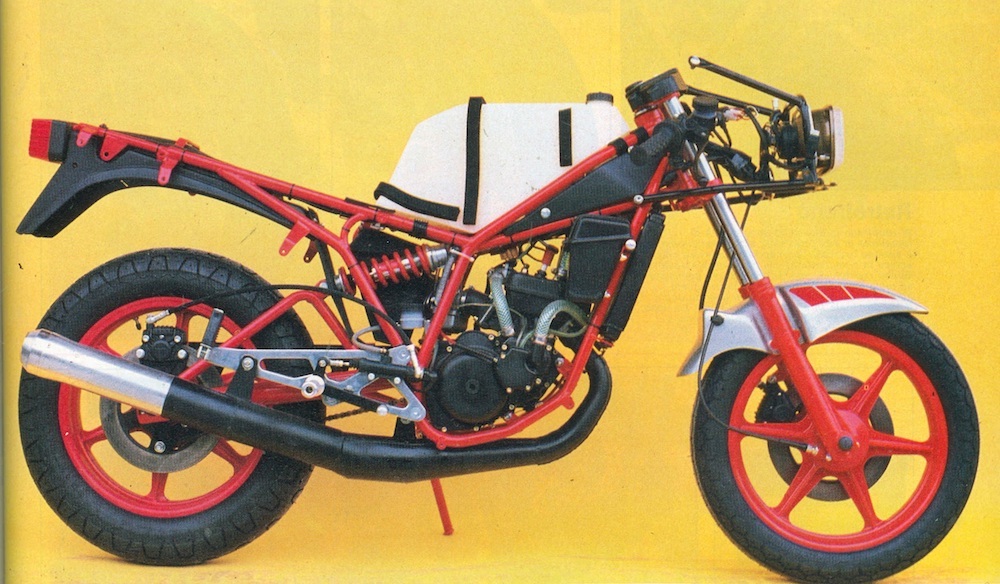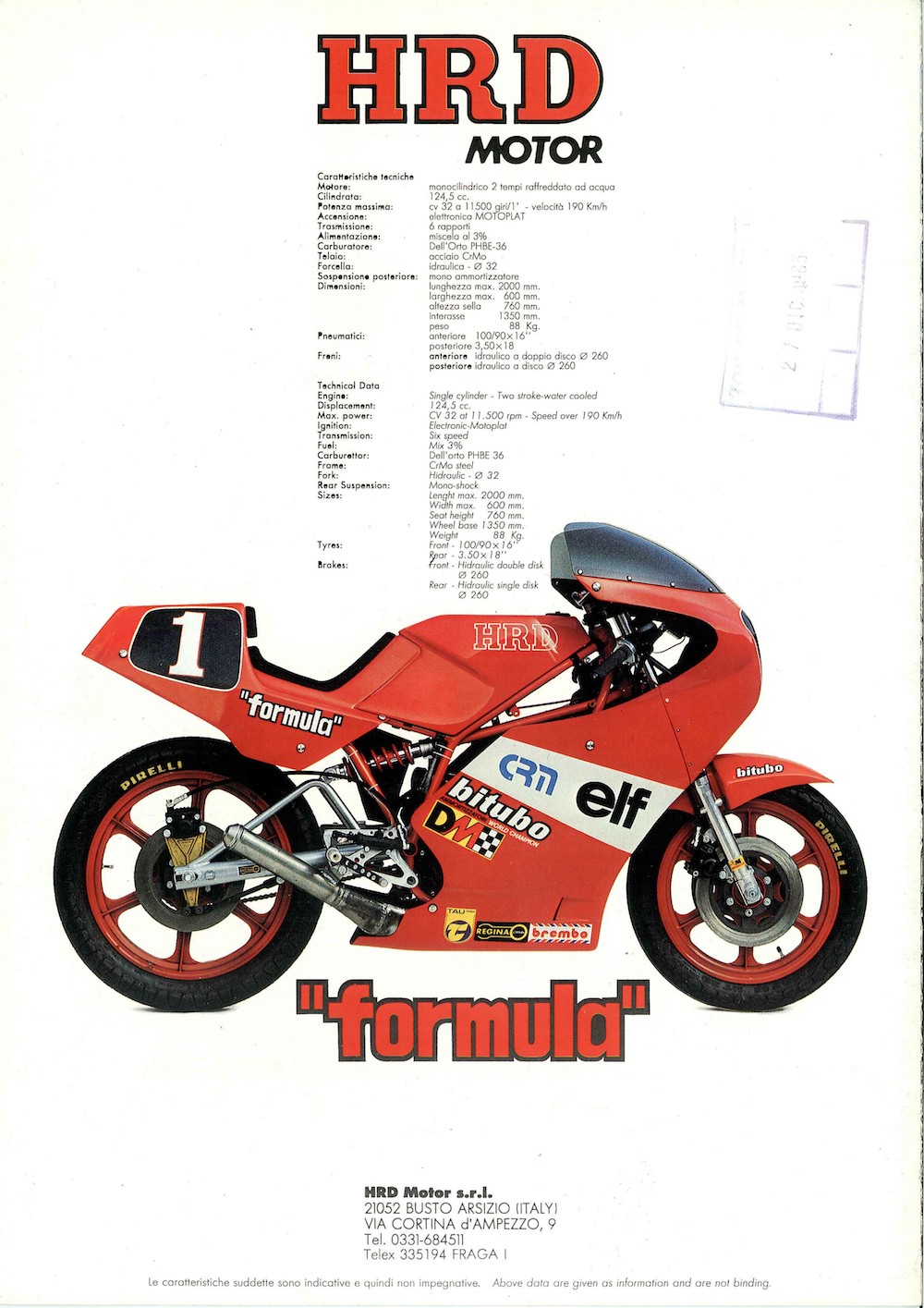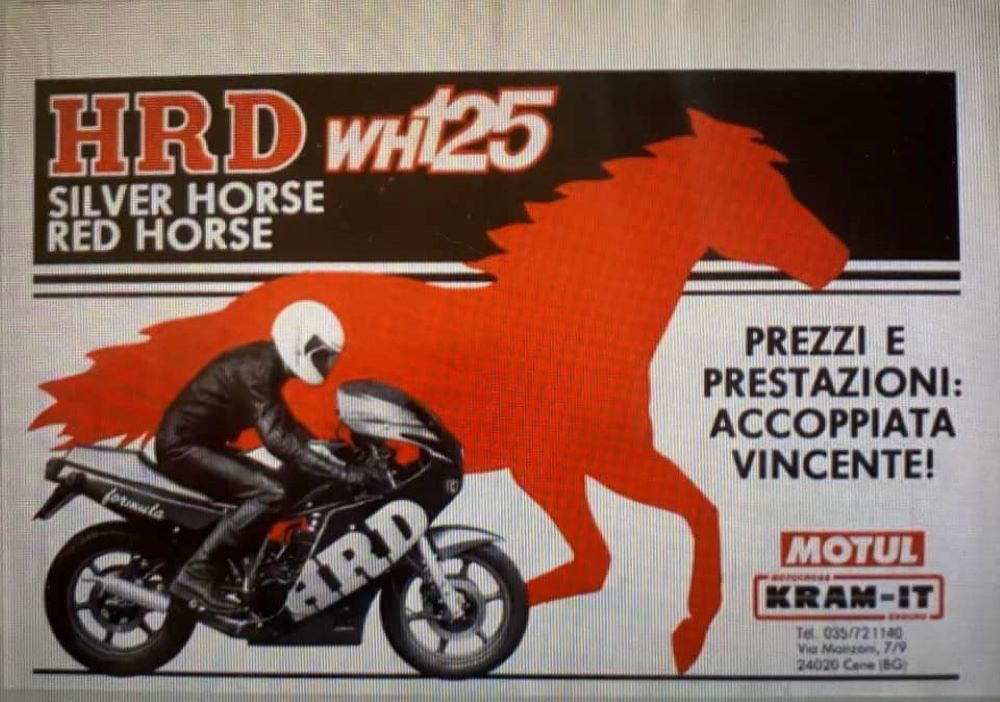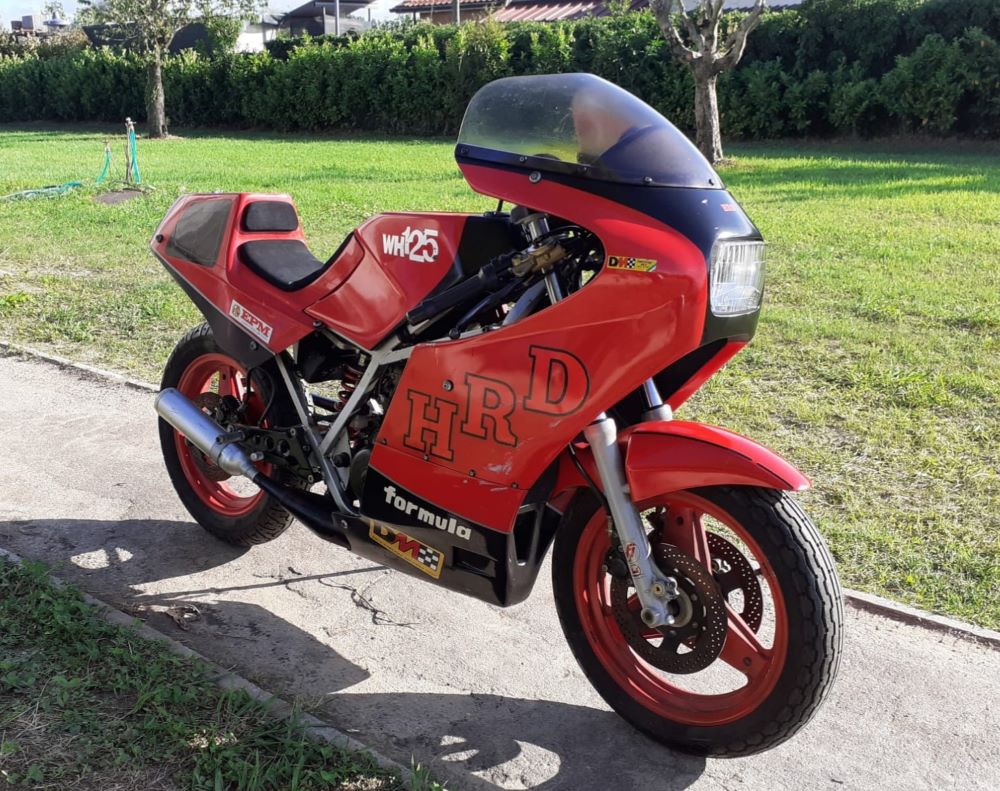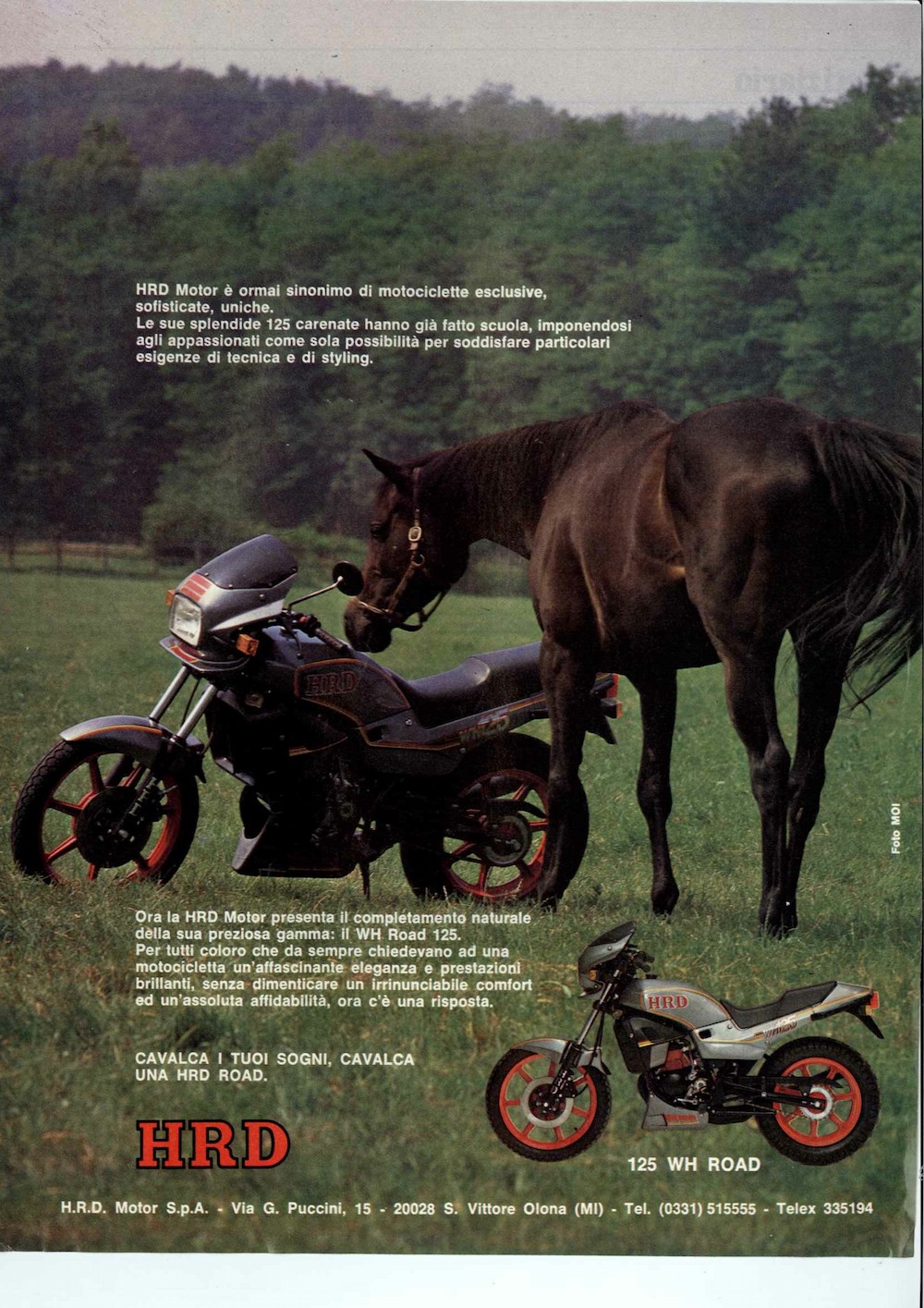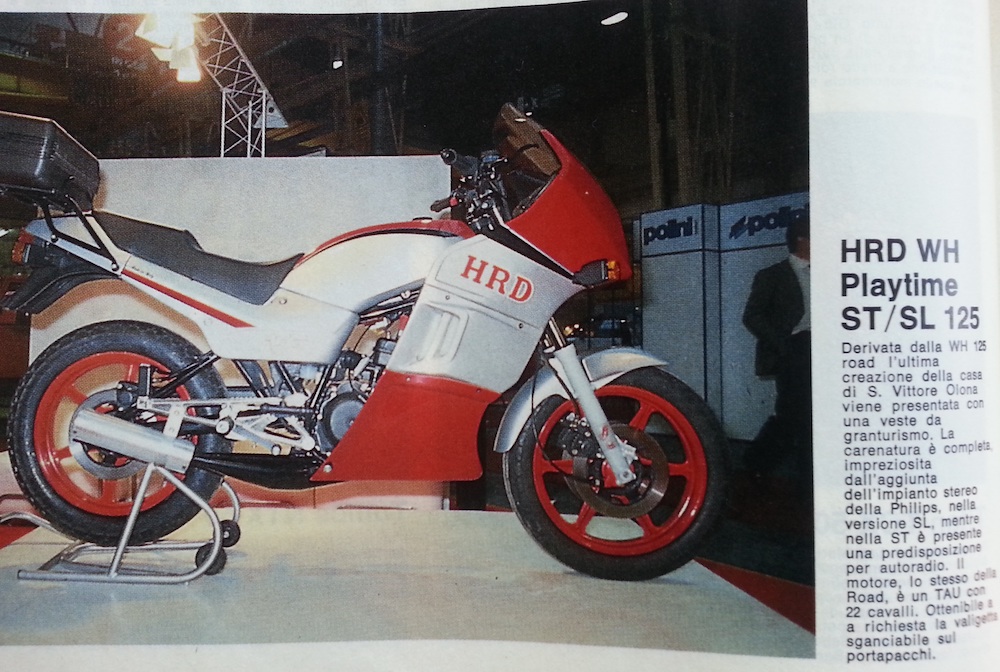HRD, ovvero Happy Red Devils – i felici diavoli rossi. La HRD Motor Srl venne costituita nel 1980 a Busto Arsizio, Varese – poi spostatasi nel 1984 a San Vittore Olona, Milano – e grazie al genio tecnico di Luciano Marabese, si distinse subito nella produzione di cinquantini da cross (HRD P3 e P6) che sembravano delle piccole Bimota, per via dei telai a traliccio con addirittura il forcellone infulcrato coassialmente al pignone, in modo da tenere costante la tensione della catena. Dopodiché iniziò l’avventura di progettare e costruire le bellissime 125 stradali Red Horse, Silver Horse e White Horse, con telaio a traliccio e motore Tau tipo TVR 30 Mixer, che sebbene rimasero in produzione solo per due stagioni, grazie all’esclusività (a caro prezzo) ed alle prestazioni degne di nota, diventarono oggetto di culto di tutti i sedicenni del 84/85. Abbiamo provato a ricostruire l’evoluzione dei modelli prodotti, ma visti gli esigui numeri di produzione e l’artigianalità del prodotto, è molto complicato cercare di ricostruire le differenze fra le varie versioni, che venivano costruite con i componenti disponibili al momento del loro passaggio in catena di montaggio. Pertanto, tenete ben presente, che sebbene abbiamo identificato tre serie diverse, non è detto che tutte le moto prodotte si attenessero alle caratteristiche qui individuate.
1984: Horse Prima serie
Il modello “Horse” viene presentato al Salone di Milano del 1983 ed essenzialmente, si tratta – appunto – di un unico modello, commercializzato in tre versioni cromatiche differenti, ognuna chiamata con un nome preciso, inteso ad individuarne il colore della carena. Alla Horse, si affianca la versione Road che le si differenzia per la generale impostazione più turistica e per la mancanza della carenatura. Il prezzo è di Lire 4.128.466 che salgono a oltre 5 milioni di Lire per la Silver Horse. Si tratta della 125 stradale più costosa in commercio in quegli anni!
La fiancata sinistra reca una piccola apertura per raggiungere il rubinetto della benzina. Sul lato sinistro, nascosta dalla carenatura, trova anche alloggio la batteria, agganciata al telaio mediante un elastico in gomme che attenua le vibrazioni trasmesse dal motore. Poco sopra la batteria, si nota il bocchettone di riempimento del liquidi di raffreddamento del motore. Il codino è apribile per dare accesso ad un comodo vano porta-oggetti.
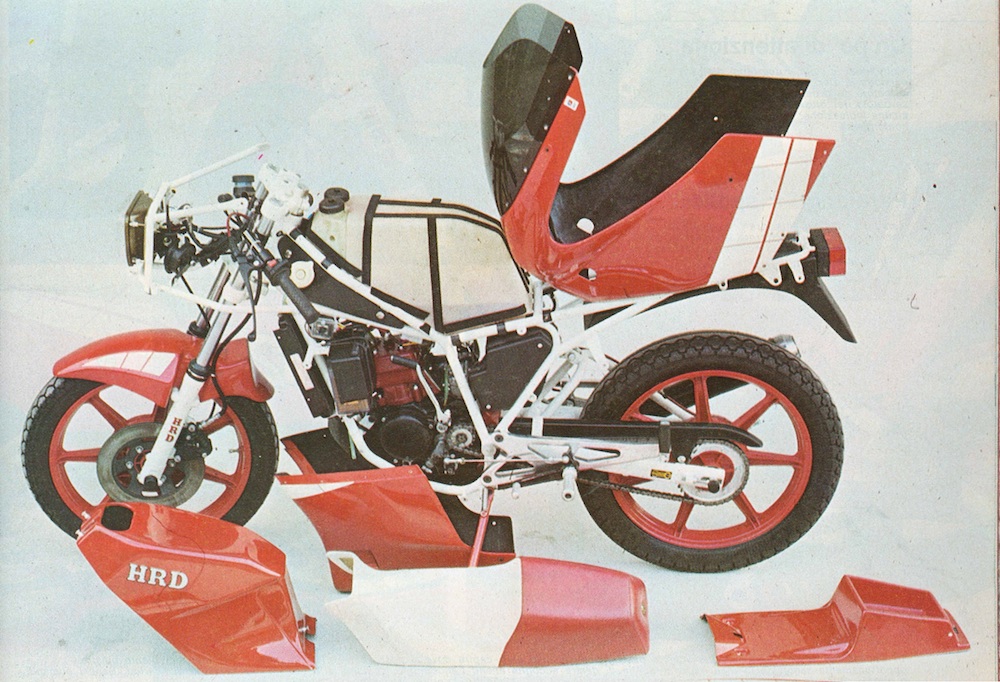
Il vero serbatoio è in materiale plastico ed è celato dalla carenatura. Si caratterizza per la presenza di due tappi prodotti dalla Acerbis, quello di destra per il carburante e quello di sinistra per l’olio.
Le pedane del pilota e dell’eventuale passeggero sono collegate al telaio mediante piastre in alluminio di pregevole fattura, con quella di destra che accoglie anche l’ancoraggio mediante silent-block dell’impianto di scarico. Molto belli i comandi a pedale. Le moto sono dotate solo di stampella laterale.
Il cruscotto, montato elasticamente, è ben protetto dall’avvolgente cupolino il plexiglass. Contagiri (elettronico) e tachimetro sono della Veglia Borletti e si leggono bene, con lo sportivo sfondo bianco. Al centro, alloggia il termometro per il liquido di raffreddamento affiancato dalle spie per gli indicatori di direzione. Al centro in basso, la chiave di contatto e sopra le spie per il folle e le luci di posizione. I comandi elettrici al manubrio sono CEV.
Il telaio (verniciato di bianco per Red Horse/White Horse e di rosso per la Silver Horse) è un traliccio a doppia culla in acciaio al cromo-mobildeno, con un ‘inclinazione del cannotto di 27° ed avancorpi di 102mm. La forcella Marzocchi, non regolabile, è da 32mm ed ha i foderi verniciati di bianco per RH/WH e di color oro per la SH. Il forcellone in tubi a sezione ovale al cromo-mobildeno ha una sospensione posteriore ad ammortizzatore singolo della Bitubo.
L’impianto frenante vede all’anteriore un impianto Brembo con disco singolo da 260mm, servito da pinza a doppio pistoncino ed al posteriore, un più classico tamburo da 160mm (a disco Brembo da 260mm per la Silver Horse). Le ruote sono entrambe in lega a sette razze prodotte dalla Grimeca ed entrambe da 18 pollici, sebbene potevano essere montate anche ruote da 16 (a volte solo all’anteriore ed a volte anche al posteriore), un pò in base a cosa era disponibile in produzione! (e spesso senza omologazione, tanto da non comparire sul libretto!)
Il motore TAU TVR 30 Mixer è un monocilindrico a due tempi, raffreddato a liquido con ammissione lamellare direttamente nel cilindro e sei rapporti. Da notare che fin da subito, tutte le HRD adottano il miscelatore automatico. Il carburatore è un Dell’Orto PHBH 28 BS ed il tubo di scarico nella prima serie è nero con fondino di alluminio sull’estremità. Nella prima serie, il carter destro ed il cilindro sono completamente verniciati di rosso. Prodotto dalla ditta Tau dell’Ing. Aroldo Trivelli, il motore ha una forte derivazione crossistica che lo caratterizza per una notevole potenza con 22,27cv rilevati a 10250 giri della SH e 21,99cv a 9250 giri per le RH e WH. Si tratta di valori notevoli che nel 1984 rendono la Horse la 125 stradale monocilindrica più potente in commercio. Il problema del motore Tau sono essenzialmente le vibrazioni: la base di partenza fu un albero motore da cross che non vibrava e aveva prontezza di risposta, ma poco allungo che lo rendeva inadatto per delle moto stradali. Quindi, i tecnici Tau lo appesantirono andando a ribilanciarlo con una formula con percentuale diversa, che però creava più vibrazioni. Si pensò di adottare un contro albero per smorzare le vibrazioni, ma per poterlo installare si sarebbe dovuto riprogettare il carter, pertanto si decise di optare per un meno efficiente silentblock da montare sull’attacco anteriore del telaio.
1985: Horse Seconda serie
Nel corso del 1985 praticamente rimane in produzione solo la Silver Horse. Il telaio è sempre verniciato di rosso, ma ora anche i foderi i forcella lo sono. Sul lato destro, è ora collocata una scatola con coperchio incernierato, che funge da vano porta-attrezzi. I cerchi da 16 a sei razze della EMP nella misura 100/90-16 all’anteriore e 120/90-16 o 130/90-16 al posteriore sono generalmente utilizzati sulla Silver, sebbene per problematiche di produzione, non è detto che venissero montati. In ogni caso, come già scritto sopra, sono diverse le HRD che lasciarono la fabbrica montando cerchi da 16 senza però la corrispettiva omologazione sul libretto di circolazione!
Il motore Tau, sempre il TVR 30 Mixer, ora è completamente verniciato di nero e adotta una nuova testata a cupola centrale, invece che a berretto di fantino, per dargli più allungo. Il pistone ora ha due fasce ed in genere si cerca di migliorare i cilindri e la cura nell’assemblaggio di ogni componente del motore, sebbene in una produzione così artigianale sia impossibile garantire il medesimo controllo qualitativo per ogni motore assemblato. Pertanto, ogni motore poteva essere migliore (o peggiore) del successivo in catena di montaggio, caratterizzandosi per più o meno potenza e per più o meno vibrazioni. Lo scarico si caratterizza per la parte finale in alluminio.
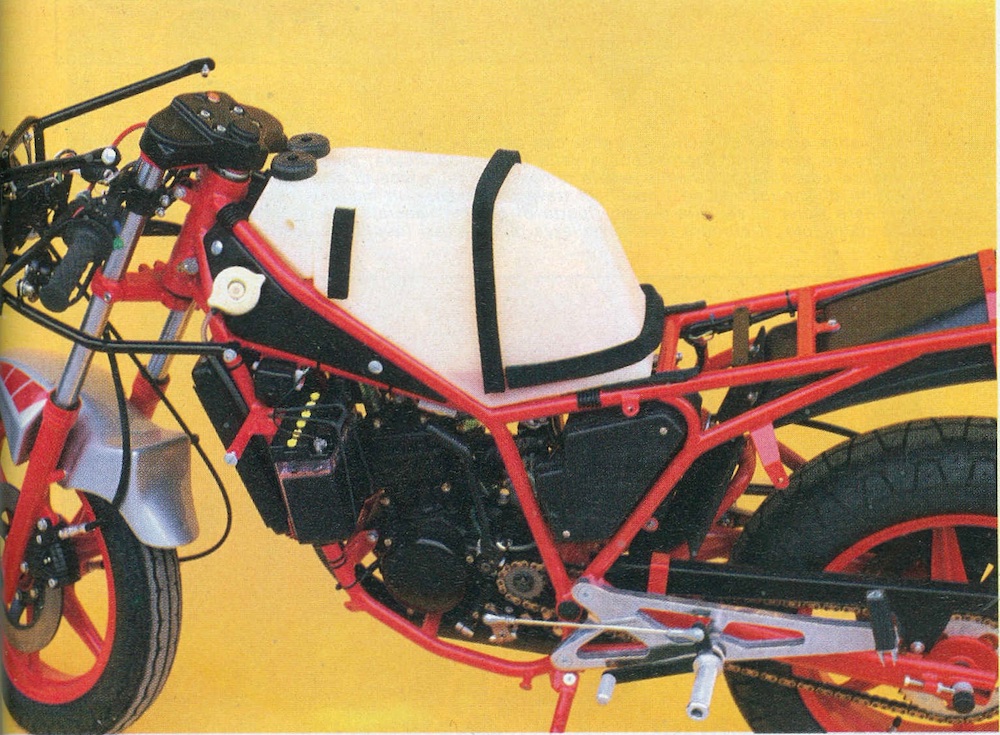
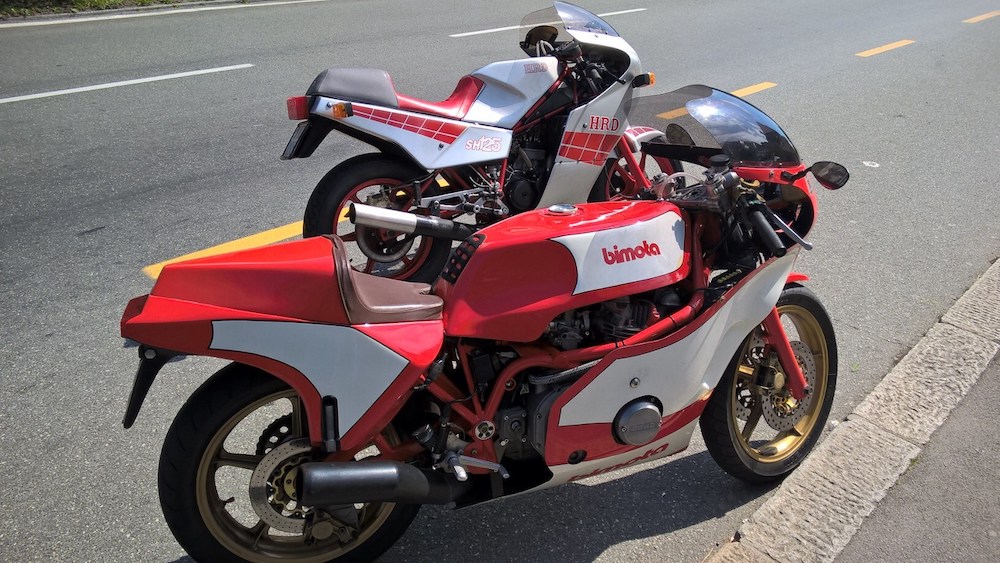
1985: Terza serie (Silver Horse)
Sempre nel 1985 esce una terza serie (pare solo per la Silver Horse) che adotta le forcelle Italia regolabili, il doppio disco anteriore da 260mm ed un nuovo aggiornamento del motore Tau TVR 30 Mixer (sempre tutto verniciato di nero) dove veniva modificato il passaggio dell’acqua togliendo il brutto tubo esterno e facendolo passare all’interno del carter e all’interno del cilindro vicino ai travasi. Viene anche apportata una modifica al selettore del cambio per migliorare l’innesto e scalata. La sella perde il caratteristico “panettone” sul posto passeggero e pertanto è fissa alla scocca. Quindi, l’unico vanno disponibile rimane porta-oggetti sul lato destra dietro alla carena. Notare che la scritta SH (Silver Horse) 125, viene rimpiazzata dalla scritta WH 125, che viene ripresa anche dalla Road.
HRD FORMULA
1985: HRD Road
La Road venne presentata nel 1983 assieme alle altre Horse, ma in effetti viene commercializzata nel 1985 nella livrea grigio fumo di londra. A livello ciclistico la Road monta sempre le ruote a sette razze da 18, mantenendo invariati telaio, (verniciato di nero come i foderi forcella), sospensioni e freni. Il motore rimane anch’esso completamente invariato, inclusi i rapporti di trasmissione.
La Road si caratterizza quindi per un’impostazione di guida più turistica con manubri e pedane specifiche.
1985: HRD Playtime
Ultimo modello prodotto dalla HRD. In buona sostanza, una versione granturismo della Road, dotata anche di impianto stereo con mangiacassetta della Philips e di due casse acustiche. Prodotta in pochissimi esemplari. La HRD chiude così la sua storia e nell’Ottobre del 1985 entra in amministrazione controllata, per poi essere liquidata nel Maggio del 1986.

